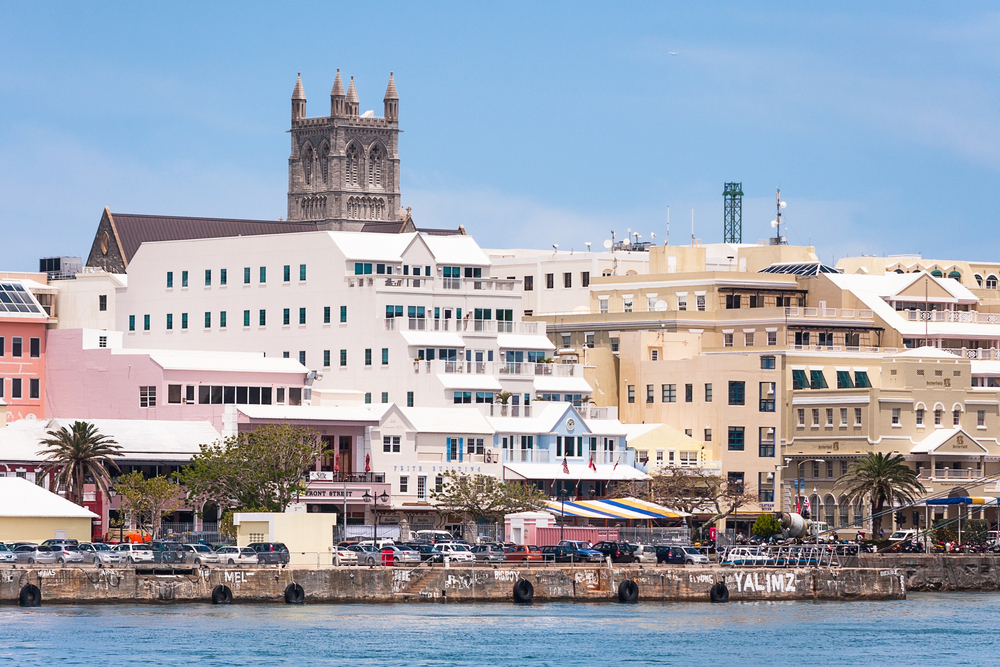Vast Wealth, Hidden Foundations: How Much Do We Really Know About Billionaire Donors?
/Hamilton, Bermuda. Photo: Andres Virviescas/shutterstock
Editor’s Note: This post was first published on November 8, 2017.
It’s no secret that the math whiz and hedge fund billionaire Jim Simons is a very generous man. His New York-based Simons Foundations holds some $3 billion in assets and has become one of the top funders of basic science research. He and his wife Marilyn also make big gifts outside that foundation, including a recent $25 million donation to the New York Public Library. And Simons has used his finance winnings to bankroll the foundations of his three children, all of whom are engaged in grantmaking on a large scale.
But it turns out that Simons has actually set aside far more of his wealth for philanthropy than has been publicly reported. An article in today’s New York Times has revealed the existence of a hidden philanthropic trust, the Simons Foundation International, that’s based off-shore in Bermuda and is said to hold $8 billion.
That’s a remarkable revelation. The combined assets of Jim Simons’ two foundations now rival the endowment of the Ford Foundation, long one of the largest philanthropies in the U.S. Meanwhile, Forbes lists Simons’ net worth at $18.5 billion and last year, he made $1.6 billion through his hedge fund, Renaissance Technologies.
In other words, not only is Simons already one of the very top philanthropists in the U.S., but there’s much more where that came from. Jim and Marilyn Simons are members of the Giving Pledge and have said that “the great majority of our wealth will be devoted to philanthropic purposes.”
It’s not known how much of this wealth will ultimately go to fund Simons’ chief interest, science research, and how much will flow to the foundations of his children—Nat, Liz, and Audrey—who are working on a range of issues, including climate change and gender equity. But any way you slice up this fortune, we’re talking about billions of dollars flowing over decades to philanthropy.
We’ve written a lot about the growing giving by members of the Simons family. It’s a fascinating story of energetic new mega-donors who’ve emerged rapidly. (The main Simons Foundation only really got going in 2005). This story has close parallels to the philanthropic empire of the Buffett family, with each of Warren’s three children—Howard, Susie, and Peter—now presiding over foundations that collectively move over $750 million a year—on top of the billions that Warren gives to the Gates Foundation. We live in an unprecedented age of philanthropic dynasties.
But today’s New York Times story puts the spotlight on an even more intriguing subject: How vast troves of philanthropic wealth can be easily hidden in an ever more complex global financial system.
The duty-free tycoon Chuck Feeney stands as the most famous example of a philanthropist who parked a vast fortune in an offshore trust—also in Bermuda—and used it to fuel a massive giving spree, with his Atlantic Philanthropies operating anonymously for many years.
But others have done something similar. In 2014, Bloomberg Businessweek revealed that a trio of hedge funders—Andrew J. Shechtel, C. Frederick Taylor, and David Gelbaum—had created hidden philanthropic trusts that came to hold as much as $13 billion. That story came and went without much discussion in the established foundation world. But it was stunning to learn that one of the largest philanthropic enterprises in American history—with assets several times larger than a well-known legacy funder like the Carnegie Corporation—had been operating in total secrecy. In fact, it’s still operating in secrecy and little has been heard of these charitable trusts since the article was published.
That revelation by Businessweek, as well as today’s article in the Times, makes one wonder: Just how much do we really know about today’s top philanthropists—either how much money they really have or how much they’ve set aside for giving?
Forbes remains the definitive authority on the wealth of billionaires worldwide. But there are limits to how much its researchers can really find out about certain rich people. Unless a billionaire holds shares of a public corporation, or a private company with a known value, it can be hard to say how much they’re worth. It’s especially easy for finance winners to keep their wealth a secret, and that’s how many of today’s richest Americans have made their money.
The other day, writing about the future of philanthropy, I noted that Forbes lists 37 American billionaires with assets larger than the Ford Foundation, many of whom have signed the Giving Pledge, and 200 people with assets greater than the Rockefeller Foundation. Those numbers suggest we’re likely just at the beginning of an earthquake in philanthropy that’s fundamentally reshaping the sector, with living donors displacing legacy foundations as the center of the action.
In fact, though, these numbers may be low. And it may also be that certain billionaires who seem to have not engaged in much philanthropy may have already created large philanthropic trusts.
In today’s byzantine financial system, it’s all too easy to hide away money for the wrong reasons, starting with tax evasion. But that same system can also be used to mask large-scale giving. As I've written elsewhere, for all the talk of transparency in philanthropy, the sector has actually been moving backwards on this front in recent years.
Who knows what surprises lie ahead.
Related:
Giant: Soros's $18 Billion Foundation and the New Era of Mega-Givers
Inside the Simons Foundation: Big Philanthropy on the Frontiers of Science
Inside the Heising-Simons Foundation: A Brainy Startup Finds its Way in 3 Major Arenas
The Quiet Hedge Fund Heir Who's Engaged in Massive Climate Giving
Darkness Grows: Time for a New Conversation About Philanthropy and Transparency







































